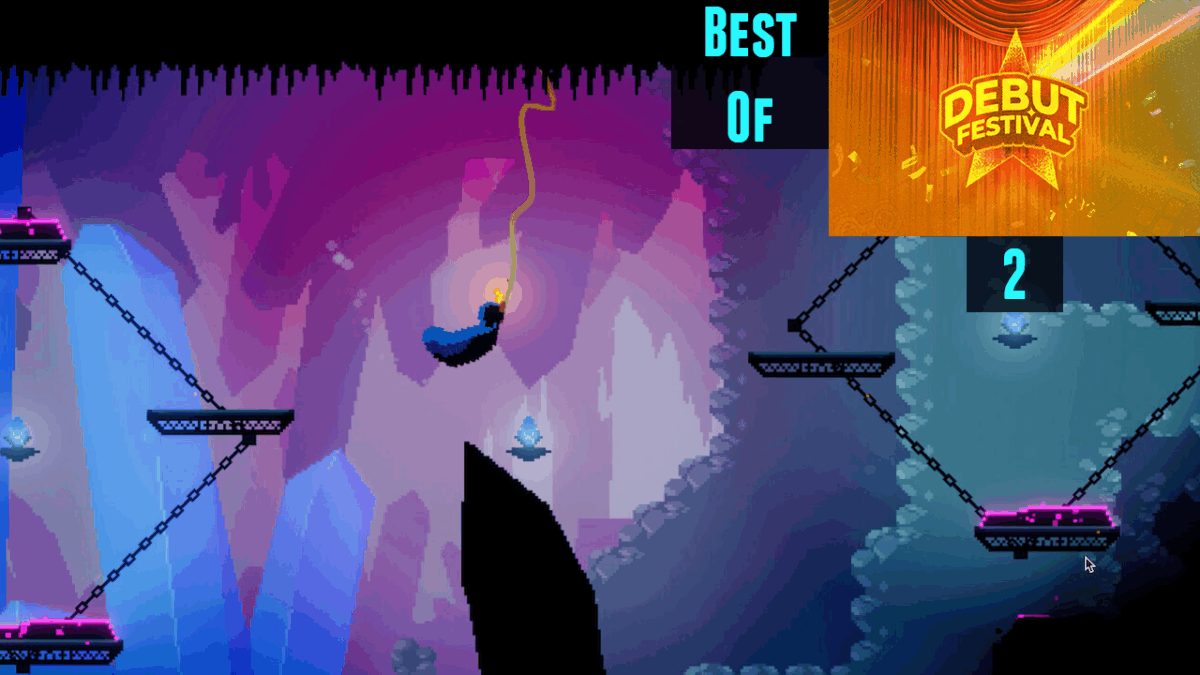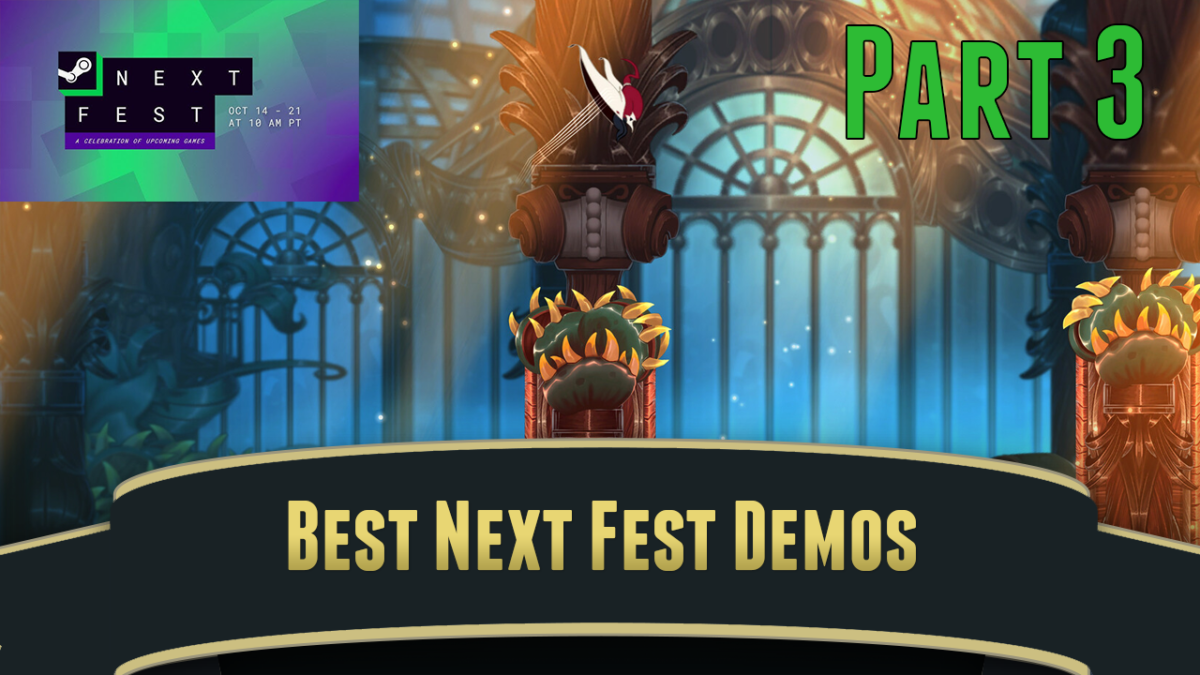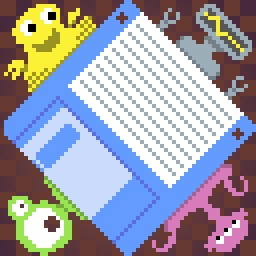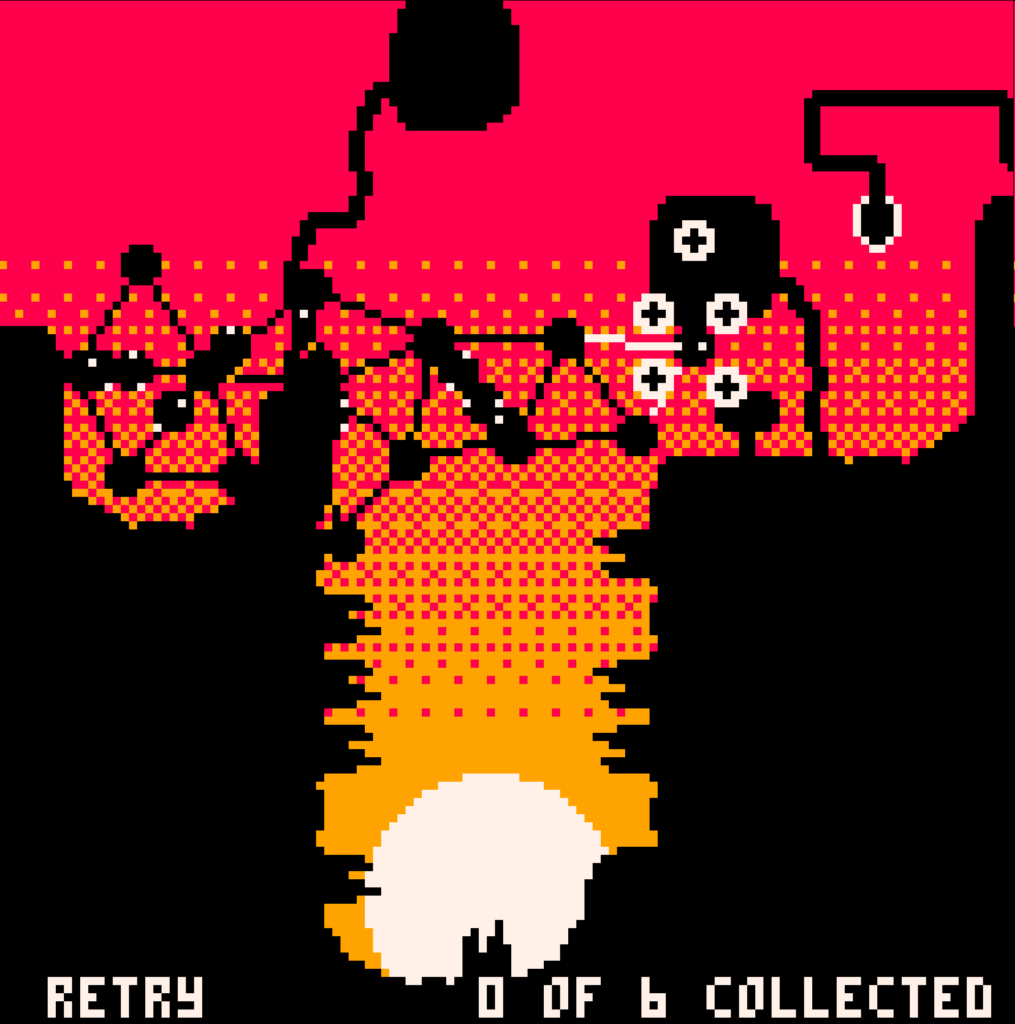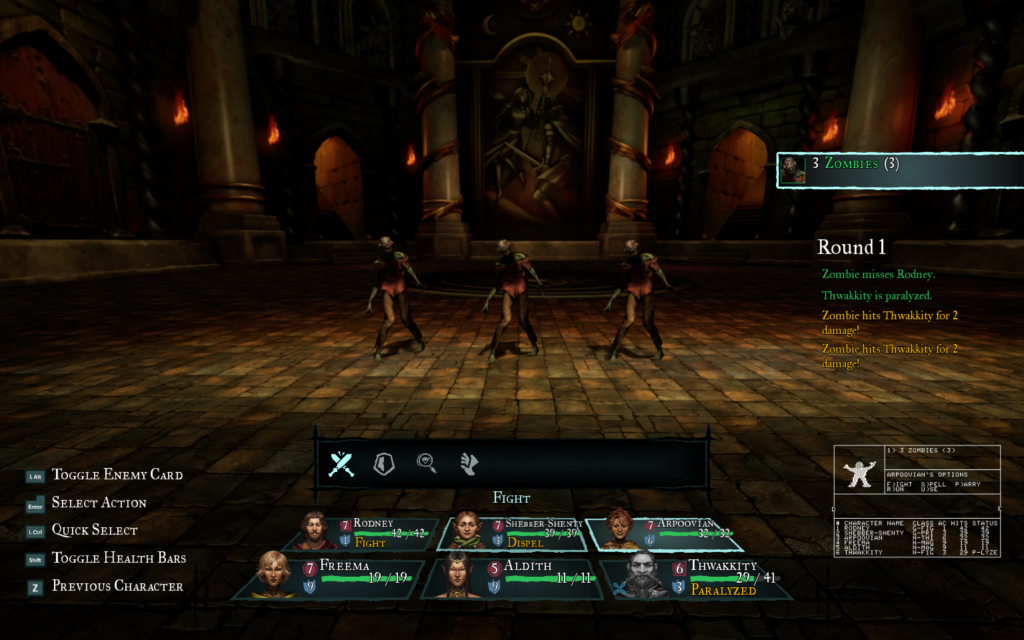The past couple of years of Games Done Quick, the best-known speedrunning charity marathon out there, has seen contributions decline a bit, but it still brings in over two million dollars each year. Here’s wishing them well for their next major event, which begins tomorrow, June 30th!
Every time a GDQ happens I make a huge post about interesting games (to me) when they’re being run, and what’s interesting about them. This here is that post for SGDQ 2024. Times given are US Eastern time, so count three hours earlier for Pacific, four hours later to get to Greenwich Mean. Lettuce bee gin!
Sunday, June 30th
1 PM – Yoshi’s Story, All Melons: Yoshi’s Story, the N64 Yoshi game, was often derided when it came out as a kiddie game. You have to remeber, back then everyone was up in arms that there existed Barney the Dinosaur. But as often happens with Nintendo, there’s more going on with Yoshi’s Story than there seems at first. Not only is it the first Nintendo game to use the handmade arts & crafts appearance gimmick, but it’s really a score attack game, and the way to get the highest score is to collect melons. Every level is full of fruit, and eating 30 of any kind will finish the level. You can sometimes finish a level really quickly that way. But the best fruit is Melons, and there’s only 30 Melons in every level. Doing an all-melon run turns a quick and easy game into an ordeal, requiring you to actually play through all of each level, and that’s what this run is trying for.
3:50 PM – Mega Man 9: MM9 came out in 2008, 16 years ago. Can you believe it? I can, I’ve learned to stop being surprised at the passage of time. More time has passed since the release of MM9 than had passed between it and the release of the last NES Mega Man game, Mega Man 6. I don’t enjoy making you feel old, but I feel like, if I have to feel old, then you have to too.
6:07 PM – Splatoon 3: Side Order, New Game+: This is the recent DLC, so a lot of rapidly-evolving tech should be available to see.
7:00 PM – Pokemon Violet, Teal Mask: This is also DLC, for an endgame continuation of Violet’s story. Pokemon speedruns tend to be highlights of each GDQ.
9:o4 PM – Halo 2, Legendary Difficulty: Surprise, I’m calling out a non-Nintendo (Nontendo?) game! This is the PC version too.
10:49 PM – Tomb Raider I Remastered, Any% Glitched: The game is Tomb Raider I-III Remastered, but the run is just the remake of the first game. If you remember the original fondly and never checked in with the remakes, this is a good chance to see what you’ve been missing. (Apparently, what you’ve been missing is glitches!)
Monday, July 1st
12:16 AM (that’s 16 minutes after midnight) – Enter the Gungeon, Rainbow Turbo All Flows (No AWP) Race: Roguelite games and randomizers are always great spectacles, because you aren’t watching people who have practiced doing the same exactly thing for hundreds of hours. They’re playing the game in a more interactive way, reacting to the spicy mean the game serves them up. “Rainbow” mode means the game spawns a variety of items at the beginning of each floor, including two items guaranteed to be of high quality. The player can only take one of them though.
5:27 AM – Smart Ball: As GDQ events have evolved, 8-bit and 16-bit games have gotten less common.
7:50 AM – Live A Live, Twilight of Edo Japan, Present Day and Prehistory Eras: The remake of the Super Famicom JRPG classic that was released about a year ago. This is only covering three of the nine chapters of the game, but since they’re largely self-contained it works out. They picked three of the most interesting chapters. Twilight of Edo is a terrific branching scenario, reminiscent of the most complex TTRPG modules, with many ways to tackle it. Present Day by contrast is the shortest chapter, consisting of only a series of boss battles. And Prehistory is a fairly traditional JRPG story, with the caveat that it’s nearly wordless through.
8:45 AM – Ecco: The Tides of Time, and 9:27 AM – Puggsy: Two Genesis games, not often seen at GDQ, and both about half an hour long.
10:49 AM – Turnip Boy Robs A Bank: The sequel to the comedy indie title Turnip Boy Commits Tax Evasion, which has appeared at GDQ events before.
1:41 PM – Sonic Project ’06; 2:21 PM – Sonic Robo Blast 2; 3:08 PM – Sonic the Hedgehog 3 & Knuckles: A whole buncha Sonic, two of them fan creations. Sonic Project ’06 is a WIP remake of the infamous 2006 Sonic the Hedgehog game. Sonic Robo Blast 2 is a fangame, also in development, that uses the Doom engine. And S3&K is the “complete” version of Sonic 3 on the Genesis, the version that comes about by attaching its cartridge to Sonic & Knuckles with that game’s “lock-on technology.”
7:00 PM – Spelunky, All Journal Entries: Another roguelite. Winning the game, and through Hell, is necessary, but only the beginning.
8:05 – Bonus Game: Balatro, 3 Deck Random Seed, Skipless: Balatro is still teh hotenss at the moment. I’ve played lots of it, so naturally I’m going to point it out here. A “3 Deck” run seems to mean winning the game three times (finishing Ante 8), each with a different deck. Not being able to skip is a substantial drawback.
Tuesday, July 2nd
2:05 AM – Doom 64 (2020), “Watch Me Die Speed”: Watch Me Die seems to be like classic Doom’s Ultra-Violence difficulty. I don’t know what Watch Me Die Speed is.
4:52 AM – Castlevania Legends: A disliked Gameboy installment in the series.
5:32 AM – Haunted Castle: The much worse first Castlevania arcade game. The fact that it’s as GDQ yet says 1CC attempt should say everything that needs saying about its difficulty.
8:21 AM – Virtual Boy Wario Land: A rare chance to see a Virtual Boy game played live, and at 22 minutes, it may not even be long enough to get a headache.
10:07 AM – Little Samson: This game is hugely expensive on the collector’s market. Come see why? I jest, we know why: rarity. This game marks the beginning of several other interesting titles: Mega Man X5 for Playstation, Mega Man 4 for NES, Sunset Riders for SNES, then a Wii port of Chibi-Robo as a bingo race, and then…
2:14 PM – Katamari Forever: The music will be stuck in your head for days.
4:58 PM – Quake II Enhanced (2023), N64 Maps, 100% Kills & Secrets
10:22 PM – The Outer Wilds, 100% Base Game Shipless: This is the game with the time loop, not The Outer Worlds. I always get them mixed up.
11:52 PM – Undertale Yellow, True Pacifist: A fangame based on Undertale. Might be interesting.
Wednesday, July 3rd
2:11 AM – Lufia II: Rise of the Sinistrals, Any% No Major Glitches or Manipulation: An underrated JRPG from the SNES days. The first game was all JRPG, but the second added interesting Zelda-like puzzles, and is considered to be the highlight of the series.
7:57 AM – Sly 3: Honor Among Thieves, and Sly Cooper: Thieves in Time, both Episode 1
2:46 PM – PowerWash Simulator, SpongeBob DLC with 6 players: How much do you want to bet someone will pull out a Squidward impression?
4:50 PM – Super “Sonic Saves the World” World, Abridged%: This is a romhack with a humorous angle. Since it’s a kaizo hack, it may be one of your few chances to see the gags outside of Youtube playthroughs.
5:50 PM – Kaizo Mario Galaxy: Oh sure let’s keep going with the brain-killing difficulty hacks. At least they’ll be playing it, and not me.
7:30 PM – Old School Runescape, Chambers of Xeric Solo: I know at least one person who’ll be excited to hear about this. Maybe you’ll be excited about it too?
Thursday, July 4th
3:07 AM – Monster Party: Why not kick off US Independence Day with this Japanese-made platformer parody of horror movie tropes?
10:53 AM – Pokemon White 2: Another of those crazy Pokemon runs, this one 3 1/2 hours long.
5:03 PM – Tetris: The Grand Master, Master Mode: Only fifteen minutes long, so set an alarm. This isn’t like the Gameboy or NES versions, the TGM games get fast quickly and only get faster. Soon they’ll be at “20G” and the pieces will effectively spawn in the bin, and the player will have to rely on lockdown delay to survive.
7:00 PM – Halo 3, 4 player Co-op on Legendary Difficulty: I include these as a nod to all the FPS fans out there.
8:43 PM – Ken Griffey Jr. Presents Major League Baseball: A sports game from the nearly-forgotten time before Electronic Arts locked down the rights to most professional sports under what seems to be a perpetual license. One of those seated at the couch for this one is Peanut Butter the Dog. An actual dog of course, not the Bojack Horseman character. It’d be hard for a cartoon character to sit on a physical couch.
10:07 PM – Castlevania: Symphony of the Night, Reverse Boss Order: “Reverse Boss Order” means using various tricks to find and fight the bosses in the opposite order than as the developers intended. I don’t know how that works in a game where the second half is gated behind a mandatory boss fight. Maybe there’s a glitchy skip. We can find out what they mean by this together.
11:32 PM – Kingdom Hearts 2 Final Mix: There are people in this world who adore the KH games. Personally I find it fun to make up titles. Kingdom Hearts: Unfortunate Destiny Eternal! Kingdom Hearts: Thirty-two Squared Ultra Power! Kingdom Hears: The Wrath of Michael Eisner! Kingdom Hearts: 358/2 Days! Oops, that one’s real. Note this run is over 2 1/2 hours.3;
Friday, July 5th
2:32 AM – System Shock (Remake)
4:42 AM – Mr. Run and Jump: Hey, I did a Q&A with the creators last year! I wonder if they’ll call in during the run with a donation?
5:29 AM – The Elder Scrolls III: Morrowind, All Main Quests: We all must know by now that Morrowind can be completed in less than three minutes, right? This one pads it out to almost half an hour by requiring all the main quests to be finished.
6:07 AM – Fire Emblem: The Sacred Stones, Ephraim Route: There’s nothing in the description saying there won’t be RNG manipulation, so expect this one to be exploitastic.
7:39 AM – Nickelodeon All-Star Brawl 2, New Game+ Campaign Character Bid War: Except the memes to fly by faster than you can notice.
9:28 AM – Stardew Valley, Skull Caverns 100 Glitchless 4 Player: The Skull Caves are randomly generated, so this is like another roguelite hidden in the schedule.
10:48 – The Legend of Zelda: A Link to the Past, All Dungeons (Swordless): One of those runs where you just want to see how they do it.
12:37 PM – The Legend of Zelda: Twilight Princess, Co-op Randomizer: Randomizers often make for interesting runs. The way co-op randomizers usually work is, there’s software running that watches both players playing a rom each randomized with the same seed, and when one of them finds an item, the other player is also awarded it.
3:37 PM – Super Mario Bros., Any%: Just six minutes are allocated for this one.
7:00 PM – Super Mario World, Kaizo Relay Race: Well frizz my hair and call me a toilet brush, it’s another kaizo Mario World hack. The two teams are the Groovy Goombas and the Funky Fuzzies. Expect much wailing and gnashing of teeth.
9:15 PM – Bonus Game, The Legend of Zelda: Ocarina of Time, Defeat Ganon No SRM: SRM stands for “Stale Reference Manipulation.” It means that player frozenflygone won’t use a particularly glichy way to make the game, speaking technically, babble and foam at the mouth. They might use other gimmicks, but not that one.
9:55 PM – WACCA Reverse: Lately GDQ marathons have reserved a period of time for showing off someone utterly ruling at a Japanese arcade rhythm game, and that’s what this is this time.
11:36 PM – Grand Poo World 3: Another Mario World kaizo hack, made by a popular runner.
Saturday, July 6th
1:31 AM – Metal Gear Solid 4: Guns of the Patriots, Extreme NG+: Which one was this again?
6:47 AM – Hyperbolica: Another game where I interviewed its creator. I was hoping that their second game, the brilliant and mindwarping 4D Golf, would show up this time. Hyperbolica is brilliant and mindwarping too though. If you don’t know what it is yet, it’s an exploratory game set in a first-person perspective where you explore worlds that exist on a hyperbolic plane, a kind of non-Euclidian geometry. Parallel lines diverge at a distance! Regular pentagons have right-angled corners! Utter madness!
10:22 AM – Quest for Glory II: Trial by Fire: Ah, a classic Sierra adventure game! I’m surprised that there are so few DOS games at GDQ overall.
12:01 PM – Kirby’s Adventure, No Major Glitches: There’s more NES games in the lineup than at past events, and this is a pretty terrific one.
2:07 PM – Pizza Tower, Any%, Noise, No Major Glitches: Pizza Tower is a recent indie success story, a rollicking game with art that looks like it came from a 90s cartoon like Rocko’s Modern Life, and with gameplay heavily inspired by Wario Land 4. “Noise” replaces main character Peppino with a different character with a different moveset, that makes traversing the same levels a different experience.
4:31 PM – Super Mario 64 Randomizer, 10 Star Blindfolded: Blindfolded runs have been highlighs of GDQ for several years now, but what will that mean to a randomized game?
5:26 PM – Baldur’s Gate 3, Honour Mode, Glitchless: Honour Mode means high difficulty and, if your party wipes, the game ends without recourse to saves (although games can still be continued outside of Honour Mode). Baldur’s Gate 3, along with Balatro, are the games of the hour, so a lot of you will want to tune in for it.
7:10 PM – Super Metroid, Race: Super Metroid race runs are a GDQ tradition. Whenever a donation says “kill the animals,” they aren’t expressing actual murderous intent, and when they say to save them it isn’t an additional expression of kindness. At the end of Super Metroid, during the escape sequence, there is a room that players can visit slightly off the main track that can allow them to let some creatures that aided them during the game to escape the decaying planet Zebes. There’s no game benefit to it, and skipping the room enables a player to finish the game maybe 30 seconds faster, but it’s a popular choice to save them anyway. In a race between two skilled players though, 30 seconds can easily cost them the victory, so they ask the viewers whether to save them or not, so both will be on equal footing in that regard.
8:10 PM – Bonus Game: Super Mario Maker 2: Nintendo seems to have abandoned the Mario Maker series, but it’s still a popular fixture at GDQ. I have qualms with how so many makers, and players, focus their efforts in constructing and completing hellishly difficult levels, but it’s true, they are popular. Bonus Games in the schedule are donation incentives, and are only played if targets are met, so this may not occur. Usually incentive targets are made in time, but not always.
9:15 PM – Elden Ring, Glitchless: Come see the popular soulslike get dissected like a frog on a workbench.
…and, at the end…
11:20 PM – Super Mario RPG Remake: this is listed as an RTA, or “Real Time Attack,” which I think is just their way of saying, they’re playing it through? But isn’t that just Any%? Anyway, it’s a new game that looks a lot like an old and popular one, you can see how far they’ve come along in destroying it since its release. I’m supposing that the remake of Paper Mario: Thousand Year Door will be in this slot come January.


